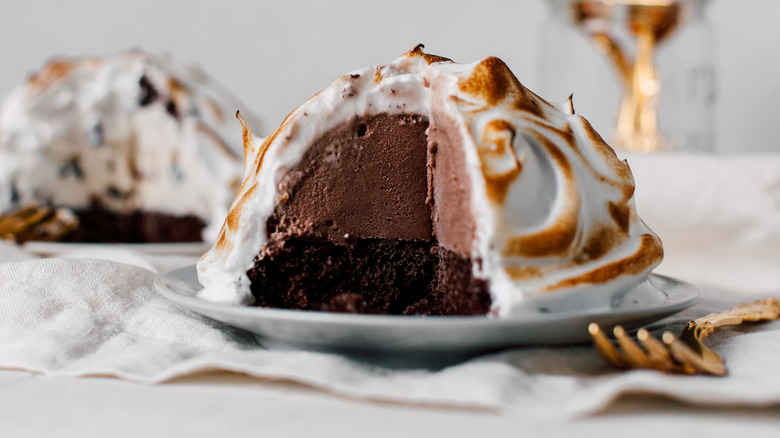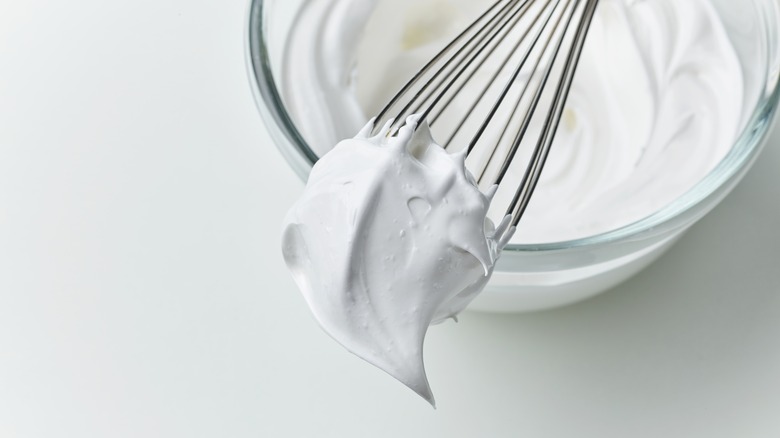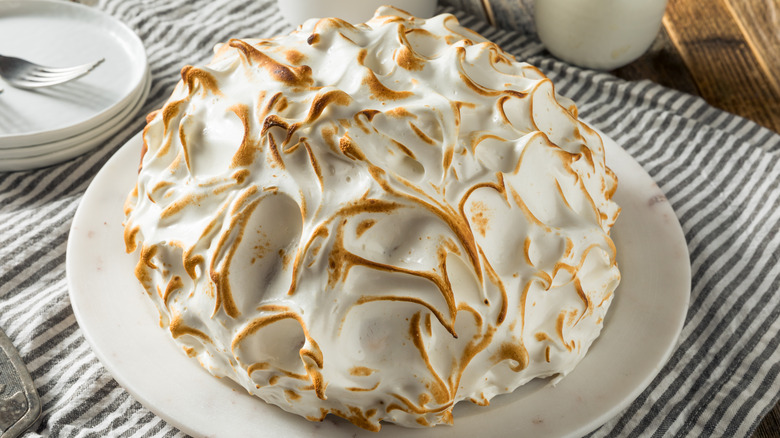The Reason Baked Alaska Doesn't Melt
If you don't understand the food science involved, it might be hard to wrap your head around a baked Alaska. Even though ice cream is one of the main ingredients and the dessert gets baked in a hot oven, somehow it doesn't melt. This is a major reason people find the idea of making baked Alaska from scratch intimidating. But realistically, anyone can pull it off because it doesn't take as much skill as you might think.
The reason baked Alaska doesn't melt is largely due to the fact that the ice cream is encased in a meringue. The mixture of whipped egg whites and sugar that makes up this meringue acts as insulation, protecting the ice cream from the heat of the oven. As a result, it'll still be cold and solid by the time the dessert is finished baking. As long as the meringue is properly made, you shouldn't have to worry about the ice cream softening too much.
Why meringue can make or break a baked Alaska
Meringue is an effective insulator because of how much air it contains. This air gets trapped in the egg whites when they're whipped. Since air is a poor conductor of heat, it's able to offset the melting of the ice cream in baked Alaska. However, without enough air in the meringue, the ice cream will be more likely to melt, which is why it's so important to continue whipping the eggs until stiff peaks form.
Since it's technically the air, not the egg whites, that insulate the ice cream, you can actually substitute it for aquafaba, the liquid drained from cooked chickpeas. Like egg whites, aquafaba traps air well when you whip it, and therefore it can be transformed into a meringue. Whether you use egg whites or aquafaba for your baked Alaska, just make sure not to let any fat such as oil or egg whites contaminate the egg whites, because this will weaken the network of proteins trapping in the air.
Avoiding a melted baked Alaska
Though a properly made meringue with stiff peaks does provide plenty of protection from heat, a thick layer of it can go a long way. The thicker the meringue layer is, the longer it can stay in the oven without the ice cream melting underneath it. A baked Alaska with a one-centimeter-thick meringue layer can stay in the oven for as long as four minutes, but one that's two centimeters thick can withstand a whole 12 minutes.
The temperature of the dessert before you put it in the oven can also make a difference. For best results, you'll want to let it sit in the freezer for up to six hours. This will ensure that any heat that does come in contact with the ice cream won't cause it to completely melt.
If you're still worried about your baked Alaska melting, consider forgoing the oven altogether. Instead of leaving it in a 500-degree oven, you can also cook the meringue by using a blowtorch. By blasting it with direct heat, the meringue will cook much more rapidly and the ice cream won't have the chance to melt.


